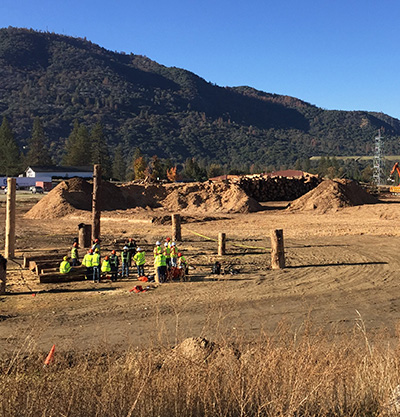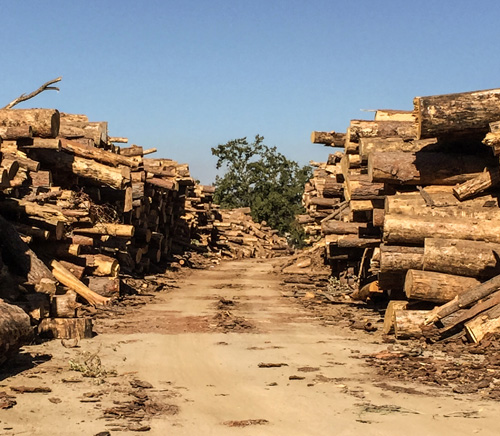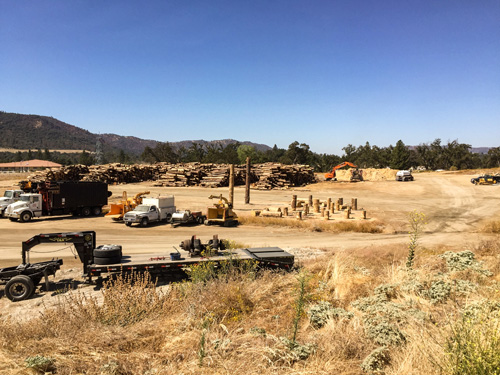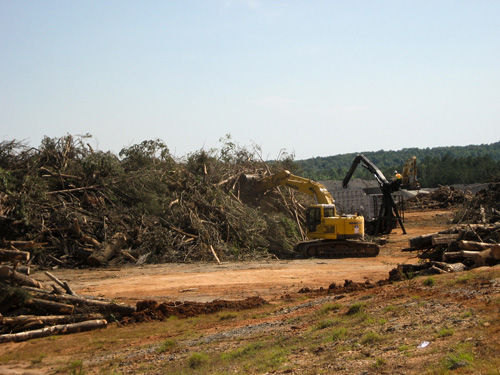
Location
14 Counties in Central and Northern CA
P&J Role
Prime Contractor
Completion Date
December 2019

14 Counties in Central and Northern CA
Prime Contractor
December 2019
Following the conclusion of the Butte Fire response in 2016, Pacific Gas & Electric (PG&E) designed an Expanded Debris Management (EDM) program to remove and process vegetative material surrounding their power lines. The EDM program responded to the tree mortality dilemma by targeting vegetative material left from felling operations specific to PG&E’s 2nd Patrol. The program covered approximately 70,000 line miles and spans a geographic area consisting of twelve counties across California. Approximately 400 project workers are presently connected to the EDM program, which was initiated immediately after tree felling operations.
The goal of the EDM program was the removal of all hazardous trees from private property within deemed proximity of a structure or PG&E assets. EDM crews lawfully entered the private property and remove dead and dying trees as identified by PG&E. All material collected from EDM operations was taken to the appropriate temporary Debris Management Site (DMS) for processing (reduction) or preparation for transportation to a timber mill or a biomass facility for beneficial reuse.
P&J provided over 110 crews to remove over 25k hazardous trees during the 2016 Butte Fire response, and PG&E continued this relationship into the CEMA EDM program. After the material was delivered to a P&J DMS, the scope transitioned to reducing or processing the material in preparation for final re-use. The material was unloaded and sorted, with resulting stockpiles consisting of either material to be reduced via mechanized grinding or whole length logs accepted as marketable timber. Marketable timber was prepared and loaded for transportation to the appropriate timber mill, with any resulting proceeds returned to PG&E in the form of a credit. All other material was reduced via grinding and delivered to the appropriate facility for reuse.




Of the tonnage that was hauled to DMSs by EDM crews, the vast majority was mechanically reduced, with the resulting chips hauled to cogeneration facilities around the state. Beginning in May of 2017, much of the material was hauled directly to cogeneration facilities, bypassing P&J DMS entirely. The cogeneration facilities, which included Sierra Pacific Industries and IHI Power plants, provided credits back to P&J for the material received. P&J, in turn, provided salvage proceeds to subcontract crews.
During peak production season, over 1,000 workers (including P&J and subcontractor employees) supported the project simultaneously, amounting to approximately 70 cutting crews, 120 gathering and hauling crews, and performed grinding operations in 8 permitted debris management sites in 8 discrete counties. Over half of the project employees were State of California residents.




Approximately 11,000 unique properties in 12 counties were cleared through removal of approximately 88,000 trees (greater than 400,000 tons of vegetative material) as part of the EDM program. In total, P&J performed vegetation management services on more than 40,000 acres under the PG&E CEMA EDM program.